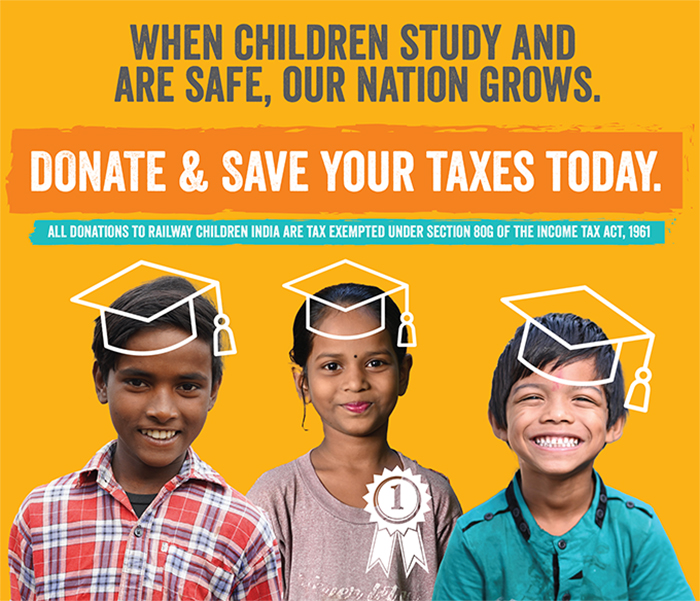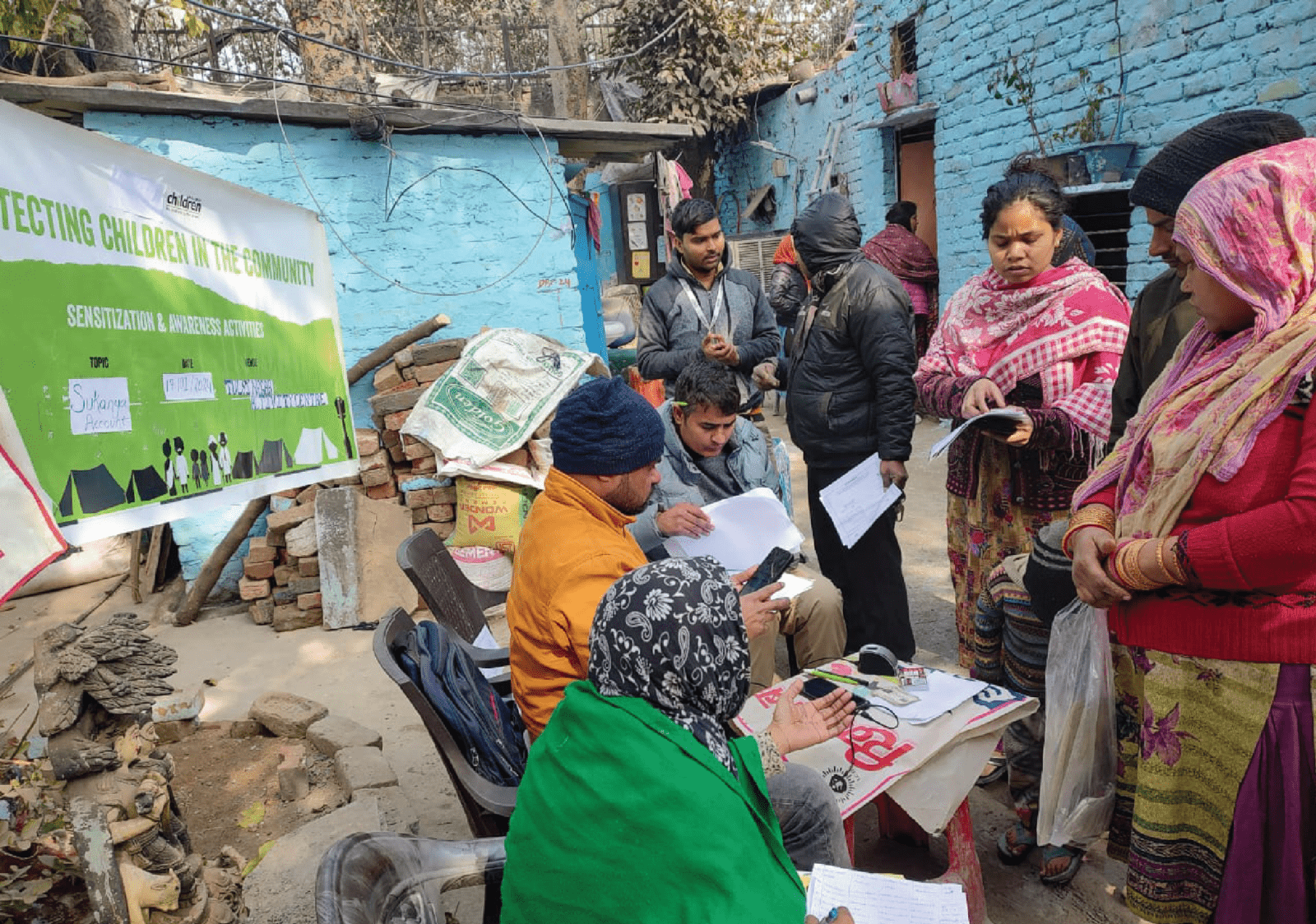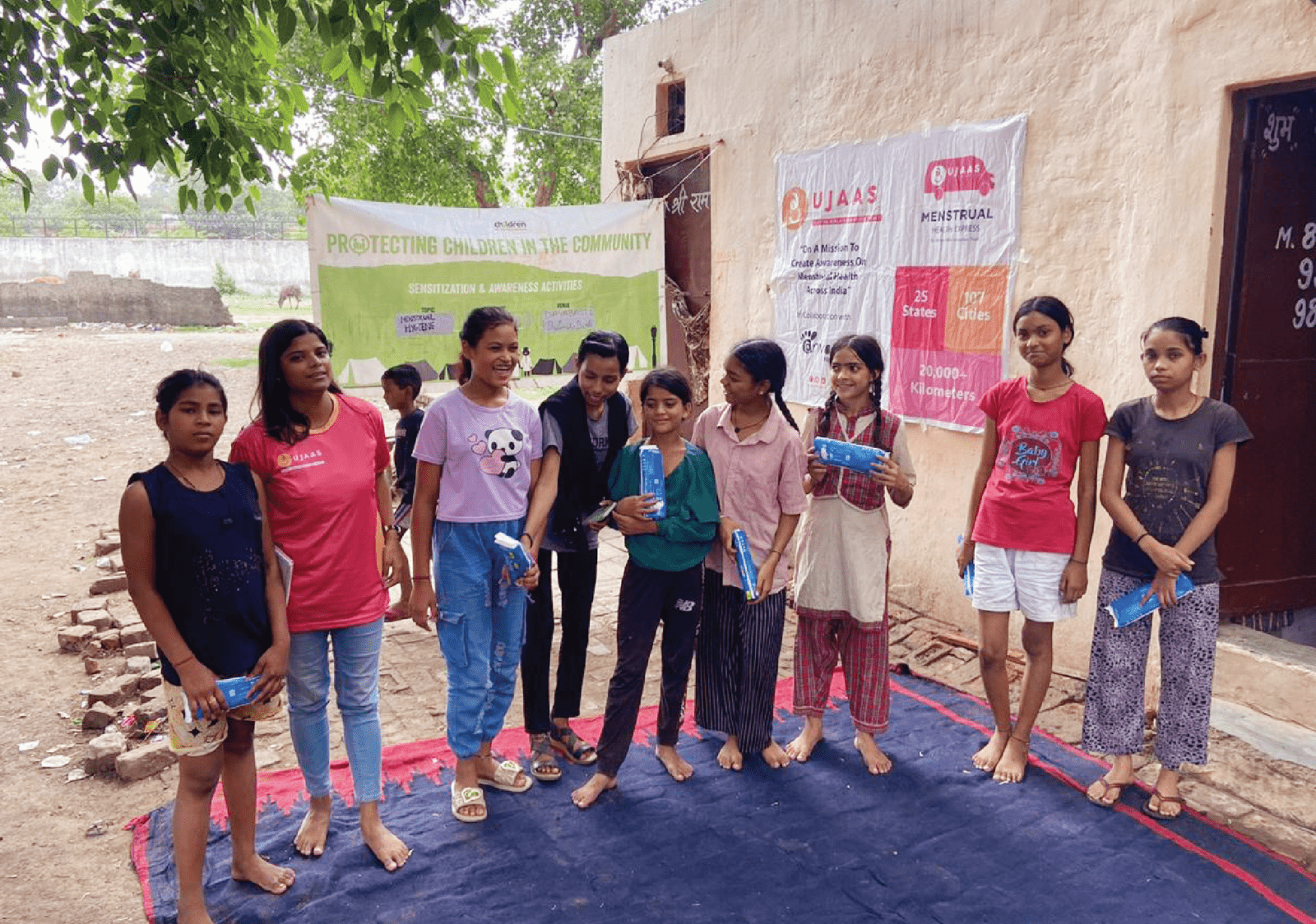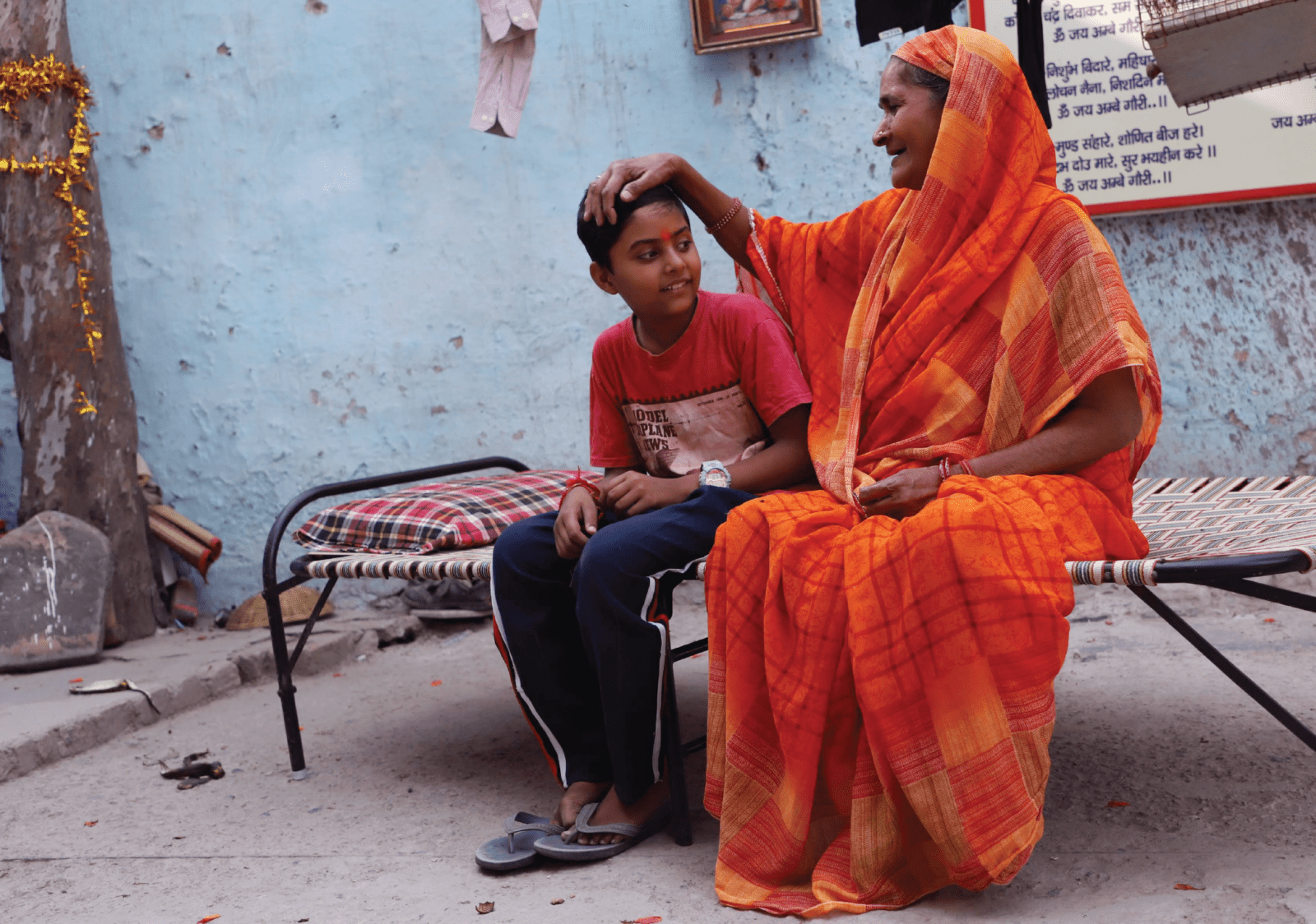Her contributions to child rights and education could fill up a book. From co-founding Pratham, initiating innovative policy changes to passionately advocating for quality education for all, this crusader for education needs no introduction.
In a candid conversation with Farida Lambay, we hear her thoughts and ideas on the current education scenario – adapting to the digital age, going back to traditional ways of learning, drawbacks and advantages of the New Education Policy 2020, developing catch up systems and bridge courses, community participation in ensuring learning and pausing to rethink and reimagine education for every child.
Read this interview to understand how we can view the education crisis from her lens, to ensure no child is left behind.
Q) The RTE Act, that you greatly contributed to, changed the landscape of education in India. How has its existence been significant in context to online learning during the current crisis?
Ans: If you look at the circumstances in which the RTE was enacted in 2009, you couldn’t really predict the future in terms of this pandemic, and we didn’t know online education would be thrust on us in this manner. However, we did know that overtime there would be a gradual shift to online learning. The RTE Act talks about the fundamentals – that is a child’s right to education, right to schooling, quality education, gender equality amongst many other things. It has been relevant and continues to be. Of course, there have been loopholes, and certain implementation gaps, for example – discourse on learning outcomes, teacher training, what would be an ideal school, private vs. govt schools, and many debates, but I emphasize on the point that the fundamentals address the basic right to education equating it almost to the right to life. Additionally, the RTE is focused on equity and equality. It talks about education as a right of every child. We have realized over the years that the right to education is not only access to school or a right to schooling but it entails the right to learning too. It is in this context that we must perceive online or what we call remote learning, to be an important part today during covid times, that will help us to achieve scale and connect with children virtually since schools are closed.
Q)What are your thoughts on the NEP 2020? Tell us about both the challenges and the opportunities that the New Education Policy present today. Does the NEP strengthen the RTE Act or not? How so?
Ans: The National Education Policy (NEP) has been long overdue. The previous NEP, which we were a part of, was almost 154 pages long with great detailing, based itself on the fundamental right to education, addressed the existing loopholes and addressed tangible outcomes of every child going to school, every child learning, and it also talked a lot in terms of curriculum, content, and assessment systems. But the new 54-page document – the National Education Policy 2020, is a concise version, and many elements of the earlier policy have not been included. Even if they are included, they are in point form and have not been detailed out. I would say that there are some contradictions between the NEP 2020 and the RTE Act, but if we are talking about the current NEP 2020, there are 2-3 great things that have happened. 1. The NEP is reinforcing the right to education and it has strengthened its commitment in terms of giving every child a right to not just schooling but also learning- a very important aspect. It is moving beyond enrolment, since 97 percent children are enrolled in India, and moving forward towards addressing the learning crisis. 2. The thrust/ focus is on the pre-primary and pre-school. The RTE Act, in its original form, said that it was only for children in the 6-14 years age group, almost ignoring the younger age group. Therefore, looking at children from 2-18 years is a good thing that has happened. 3. In the pre-school domain, the NEP talks about the combined approach of 5 + 4 + 3, which is a new structure, looking at pre-school as a unit and giving a continuum (well-given) and attaching the pre-school within the school premises.
How it will be done and implemented, one needs to wait and see because pre-school children fall under the women and child department as far as the Anganwadi’s are concerned. And the education part falls under the Education department, so whether the departments will come together administratively or not, it is something we will have to watch out for. But conceptualizing that the early years are important, and that we should be talking about 3-8-year-olds is great! It highlights that if we don’t strengthen children early on, none of the other aspects will work…which is a bold statement to make, but it gives the thrust and importance to education of children in that age group.
For all of us working in the area of education and child rights, we are extremely happy.
For the 3-8-year-olds group, the NEP 2020 has concentrated a lot on learning outcomes, and how children have to be assessed, how foundational skills and numeric skills are important. But again, it is in context to a lead schools, school complexes amongst others, which are robust ideas, but if it will be implemented, we don’t know. This plan is possible only if it is worked out very meticulously. Also, the higher secondary, for 11-12th grade, the NEP talks about doing away with exams, and the focus is rigorous continuous assessment which is good and child-friendly, and provides a vast choices of subjects which is good, moving beyond just science, maths etc which is limiting.
Budgets is another big thing. The current conversation is around a 6% GDP for education, but this has been talked about for a long time now. We have to see if there is a commitment and whether or not it will be implemented. Very often conversations don’t translate to allocation. In this situation we can hope.
What we need to remember is that the NEP is just a guideline, it’s not the act. Therefore, the NEP will have to be looked at in terms of what are the rules and regulations people will go through, which skill sets will be assessed? In some states the language and mother tongue aspect come into play. There’s already a discussion about 2 and 3 languages. Also, education is a concurrent subject which means that the states will take some decisions, and not only will they take decisions in terms of the implementation, but also in terms of the budgets to be allocated towards education.
These are only some of the challenges with the NEP, but having said that, this has been a long-awaited national policy. From one point of view it is good, looking at the contents of it, but what is missing is that nothing is being said about children with special needs and inclusive education, besides one paragraph. There is almost no mention of child labourers, street and vulnerable children. How do we mainstream them? There are so many dropouts, but that again the states will have to be deciding about non-enrolled children and actual dropouts, which is another missing point. On the flip side, it talks about girl’s education, giving girls a second chance, mainstreaming, NIOS, amongst other things too, which are positives.
Overall, the NEP 2020, viewed from a particular lens, does strengthen the RTE Act, but again, a lot will depend on its implementation too.
Q) What are the real, on-ground challenges being faced by children with schools shut down and classes moving online.
Ans: The top challenges are largely socio-economic in nature, followed by anxiety, uncertainty looming large, parents not working in some places, rise of domestic violence, and the lack of understanding amongst children in terms of what is happening. In terms of academics, the governments local administration has started online education, and many private players too have started online classes. One major challenge is the onslaught of online education which sometime leads to children not knowing what is happening in class. We as Pratham have been working with a lot of children online, sending them smses, whatsapp messages, something we have been doing since the first day of the lockdown.
We found that only 40% of our population actually has smart phones and android phones, while the others don’t have any phone or very basic phones. One of the challenges we have to meet now is that, while online education might have become the new normal, we have to be realistic that it might not always be possible to reach the unreached. The dialogue today is about the probability of a widening digital divide in the current scenario.
Q)The ‘digital divide’ has been a grave point of discussion today. What are your views on the same? How can the effects be mitigated?
Ans: For families who don’t have access to TV’s and smartphones, their children will miss out on online education. But my opinion is that instead of getting panicky and anxious about children missing out on school in this year, we don’t need to be so sacrosanct about starting schools in June. Maharashtra and many other states are saying that schools will not open till November- December, so be it…it’s okay!
Firstly, whenever schools start, the government, schools and organizations like ours, need to view it as a catch-up activity. Today, many children have forgotten what they have learnt some months ago, therefore, instead of over-pushing them and hurrying up to finish the curriculum, let’s first focus on children catching up on what they have lost and then start from there. Therefore, the academic year doesn’t need to always start in June, it’s alright if we are one year late. I think we need to publicize this point, to ensure people are not anxious about education and learning, because the safety of people and children is very important. This is not an easy virus to deal with, therefore children’s health needs to be paramount.
Secondly, children who cannot be reached is a huge percentage. Even if you take an urban city like Mumbai, we were doing a survey with 14,000 children, and we were only able to contact 6000-7000 children from this sample through their phones. Either their phones are not working, no recharge is available, sometimes they can’t talk on the phone. Therefore, what the government and corporations have done is send a lot of online material. 50% have got the books and reading material but parents don’t understand what has to be done with the material and there’s no one to do handholding for parents to pass this on to children. The other challenge is of recharge, or wifi or even a basic internet connection.
I believe the time has come to go back to some of the traditional methods of learning and education. As Pratham, we have started to use a radio programme in some rural areas, which has become quite popular. In urban spaces and cities like Mumbai we are trying to engage volunteers, youth, ganesh mandals and existing collectives at a community level. We need to identify more of these possibilities within the community so that the community itself gears up to teach its children.
Today, school opening is a challenge. Say for example school does open, and two children are found infected, school will shut down again. So, this is going to be our reality on and off for some time now, for which we need a back up. That back up needs to be in the form of youth, children, parents and community volunteers who we need to connect to, schools need to reach out to these groups, and we need to encourage community participation for education and learning in the real sense of the word. Of course, we need other strategies for street children, working children, children in institutions, but these are some ideas for the children who are already going to school.
Q) Schemes like the Mid-day meal, betibachaobetipadhao have contributed as pull factors for children being sent/ coming to school. With what seems like an unending lockdown, what measures are being taken to ensure these schemes linked to the education of marginalized children are being implemented, to ensure children continue?
Ans: These schemes are not playing a big role at this moment, but data is not available to me on this. However, the integrated Child Development Scheme (ICDS) is going through in many states. Also, people are more preoccupied with safety, and health at the moment. For online education the Diksha app has started, TV programmes, online material by different governments are in motion too. States like Himachal Pradesh and Punjab are doing a lot on this, also because the incidents of covid in those states has been less. States like Maharashtra and Delhi are still slower. Maharashtra has started online education, with interesting programmes right now. However, children are finding it difficult to concentrate and watch TV with other more interesting programmes going on. In urban cities, homes are very small, and filled with large families. Even one TV per home means all of them are sharing it and competing for it. And it is the same for mobiles. There is no privacy to even concentrate and read or understand. Owned mostly by adults, children have to wait till parents are back from work, off the phone and have time to even download their study material. These are very real factors. Children who have their space, privacy, internet connection, laptops and other material for online learning are coping well in comparison, almost like home-schooling.
Therefore, the role of parents today for education and learning for their children has completely changed.
Q) With your years of experience, in the current education crisis, what do you believe is the best way forward to ensure the larger aspiration of ‘quality education for all’ as we move ahead? Give us a few suggestions.
Ans: Globally, the world has accepted one thing – enrolment is a problem, but the issue of drop out children will be more real, especially now with covid. We collectively need to be alert of who is dropping out and why, and we need to have a special focus on girls because in terms of gender inequality, in these times, families might be further dissuading girls from going to school. Additionally, children who were not performing academically well, might be at risk of dropping out too.
The other challenge is of learning loss. It has been scientifically proven that children being away from school for so long are forgetting what they have learnt earlier. Whenever schools open up, as society, governments, NGO’s and schools the first thing we need to do is not panic but really understand and accept the situation for what it is before we can act on it. Let’s start from where the children are. At Pratham we always start with an assessment, it might not be a very detailed one, but it helps for the teacher to understand where the child is at. Does a 3rd standard child remember what he has learnt previously? Depending on that, we can develop catch up systems, or a bridge course, and we can give a little push so that children come to their level of competency and level of class. This actually needs to become a policy instead of looking at grade level syllabus and content, as currently content is also reduced, and exams have been either changed or delayed.
Also, the question of what we are assessing, come into play. Are we testing their excellence, the level they are at vis a vis their standard/ class or we are just assessing where we have to take them? Therefore, adaption both in the methodology of the teacher, school timetable, has to be done accordingly. In some states, schools are sending academic calendars like nothing has happened, trying to finish one lesson after another, some schools have finished 15 lessons by now, but do we know what children are learning and comprehending?
This is just in context to foundational learning. As far as the older children are concerned, those in the 9th and 10th…that again should be looked upon as one group. For them there needs to be an online strategy to understand what is expected of them for the board exam, but here, are we focusing on problem solving, completing the syllabus or what?
This year, we need to adapt, re-learn and reimagine what we are going to do for our children. We need to give ourselves, educators, parents and mostly children some time. Maybe we won’t be able to achieve the best results and outcomes but learning no matter where, needs to be a pleasant and stress-free experience. Going forward, this has given us a good opportunity to pause and reflect about goals of education, goals of content and how to mainstream education to reach every child. How do we engage children with special needs better? Can something be worked out for children who fall out of the school net? Can online and digital education using videos, digital content, whatsapp messages, creative smses be created for children without smart phones? If this can be done, we have our presence in both the online and offline worlds and more children will have access.
With covid, we have had no choice but to pause and relook at our own work and strategies for education. At Pratham, we are adapting to shifting work online too. From teacher training, content for children, we have to relook at how best to use digital tools. While we cannot substitute actually going to school and to class, but we don’t have to be despondent, instead we have to learn to learn. That’s where our education system needs to head at, by looking at it through the lens of every child, where no child is left behind.







